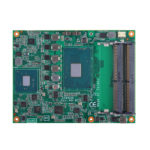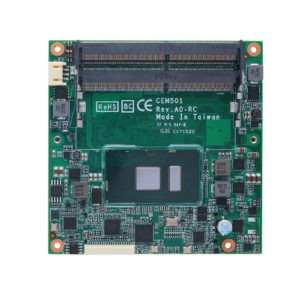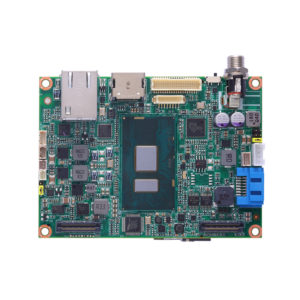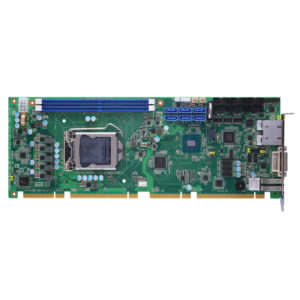Embedded Computers and Advancements in Blood Testing Technology
 Over the last few years, medical technology companies have been making news headlines by promising improved blood tests that are not only precise, but also nearly pain-free since they require only a single drop of blood compared to other current options. In fact, this new way of collecting blood for lab testing purposes is so controversial that it has people wondering, how is this technology even possible and will this new method mean faster and more accurate blood test results?
Over the last few years, medical technology companies have been making news headlines by promising improved blood tests that are not only precise, but also nearly pain-free since they require only a single drop of blood compared to other current options. In fact, this new way of collecting blood for lab testing purposes is so controversial that it has people wondering, how is this technology even possible and will this new method mean faster and more accurate blood test results?
While not as life threatening other medical emergencies, dealing with needles is still a painstaking everyday procedure for hospitals when running blood tests. Medical professionals typically gather multiple vials of blood in order perform medical laboratory tests to determine diseases, organ function, and pharmaceutical drug effectiveness – which can be an uncomfortable process for patients. Furthermore, 70% of medical decisions depend upon the results of blood tests, meaning that accurate results are important to provide information that can aid in the prevention, diagnosis, treatment and management of diseases.
The process of extracting blood for testing purposes has been used in the medical industry for many years and new medical technology has improved all facets of getting lab tests done. With the advancement of software and hardware technology, some companies are claiming that a single drop of blood from a pin prick is all that is needed for extensive blood tests. Even though tests from a single drop or blood are controversial at the moment due to their radical technological claims, the Center for Disease Control agrees that new blood screening technology is still improving the way that blood tests are achieved- meaning improved patient experience.
However, the CDC also noted that more than 50% of medical laboratory mistakes during the analytic phase of blood tests are due to faulty equipment and human-made errors. To successfully provide the results and further diminish this error rate, reliable equipment must be integrated with a high performance embedded motherboard that offers high computing power, communications capacity, data transfer options, storage capabilities and more in order to process complex information in a fraction of the time old blood tests used to take. Additionally, less blood can be accurately analyzed, results can be concluded in a much shorter amount of time, and more thorough testing can determine some diseases that might not be readily apparent. The process becomes less painful since only a small amount of blood is needed. New technology means that human errors are minimized, and the costs associated with blood analyzing are reduced, bringing down expensive healthcare costs for everyone.
Axiomtek’s embedded motherboards are specifically designed to work in medical applications and can provide integrators with high computing capabilities needed to run complex hardware that can process information found in blood. These embedded motherboards are also feature-rich with high expandability options for USB 3.0 and 2.0 ports, DIO, PCI Express ports, Gigabit LAN ports and more to fit the challenging needs of the medical industry. Axiomtek offers a variety of embedded motherboard form factors to suit various space constricting needs including COM Express, Mini-ITX, Pico-ITX, 3.5-inch, and more.
To meet specific requirements, Axiomtek’s expert design assistance services team has successfully helped many customers with customization needs over the years including DNA sequencing machines and even dental implant machines. With years’ worth of rich experience, Axiomtek can provide help in order to take away the stress associated with all phases of a new project– from development all the way to deployment. Read more here.
Product Showcase
 – High performance 6th Generation Intel® Core™ i7/i5/i3 processors
– High performance 6th Generation Intel® Core™ i7/i5/i3 processors
– Compact COM-Express Type 6 module, with extensive customization capabilities
– Operational stability with extended operating temperature range of -40°C to +85°C
– Four SATA-600 interfaces with RAID 0/1/5/10 for reliable storage, capacity, and performance
 – High performance 6th Generation Intel® Core™ i7/i5/i3 processors
– High performance 6th Generation Intel® Core™ i7/i5/i3 processors
– Two DDR4-2133 SO-DIMM supports max up to 32GB for high memory capacity and high rate data transfer speed
– Intel® Gen 9 HD Graphics provides Ultra HD via HDMI/DVI/DisplayPort
– Rich I/O options with six PCIe x1, three SATA-600 interfaces, one GbE LAN port, four USB 3.0 ports, and DIO
 – High performance 6th Generation Intel® Core™ i7/i5/i3 processors
– High performance 6th Generation Intel® Core™ i7/i5/i3 processors
– Integrated Intel® HD graphic engine supports HDMI and LVDS to deliver Ultra HD visual experiences
– Board-to-board connector for HD audio, four USB 3.0 ports, one PCIe x1, one DDI, and two UART interfaces
– Easy maintenance with Intel® AMT 11 technology on Intel® Core™ i7 and i5
 – LGA1151 Socket for 6th Generation Intel® Core™ i7/i5/i3 Pentium® or Celeron® processors
– LGA1151 Socket for 6th Generation Intel® Core™ i7/i5/i3 Pentium® or Celeron® processors
– Two DDR4-2133 SO-DIMM support max up to 16GB for high memory capacity and high rate data transfer speed
– Intel® HD 530 Graphics for up to four display interfaces via HDMI, VGA, DisplayPort, and LVDS/eDP for Ultra HD
– Rich I/O options with two RS-232/422/485 ports, four RS-232 ports, four USB 3.0 ports, two GbE ports, and eight DIO channels

– High performance 6th Generation Intel® Core™ i7/i5/i3 processors with Intel® Q170 Express chipset
– Six SATA-600 interfaces with RAID 0/1/10/5 for enhanced storage reliability, capacity, and performance
– Rich I/O options with one PCIe x16 Gen 3, one PCIe x4 Gen 2 (or four PCIe x1), and four 32 bit PCI bus masters
– Watchdog timer for reliability, Intel® AMT 11 for remote management and TPM 1.2 for data encryption and trusted boot pathway

